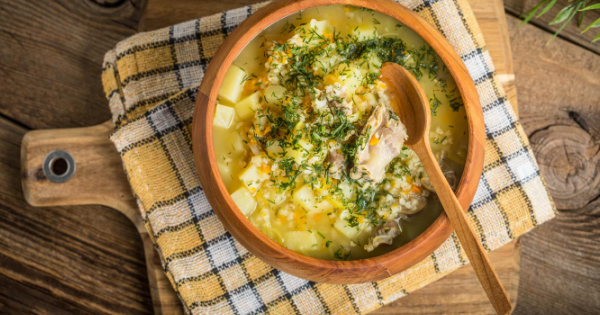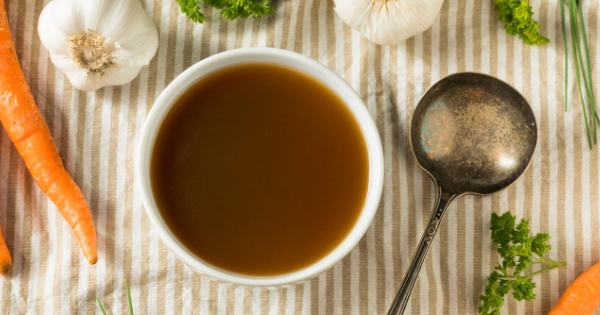When you are eating healthy during pregnancy and breastfeeding, it does not necessarily mean you should restrict calories or attempt to lose weight. More importantly, the idea is to follow a healthy eating plan to ensure your body is getting the necessary nutrients which is crucial for your health as well as your baby’s. Dieting to try and lose weight when pregnant can be hazardous to both you and your baby, particularly since you might not take in essential nutrients like folic acid, iron and other important minerals and vitamins. We all know that breakfast is the most essential meal of the day. We will be sharing some healthy pregnancy breakfast ideas with you in this post.

Healthy Eating During Pregnancy
The type of meal plan that is encouraged during pregnancy is basically fine-tuning your meals to make sure you are getting enough nutrition to sustain both you and your baby during this special time. Healthy eating is paramount for your baby’s development and growth. To have a healthy intake of the nutrients your body needs, we recommend eating a variety of food groups that include breads and grains, protein sources, dairy products, and fruits and vegetables.
Healthy Eating When Breastfeeding
If you are nursing, you have to consume more calories to sustain your energy (the amount varies between zero to five hundred extra a day, contingent on how active you are and if you are breastfeeding your child exclusively). You do not have to follow a specific eating plan for nursing since the amount of milk your body makes, depends on supply and demand, not necessarily the foods you consume. It is always a good idea however, to eat balance meals which are nutrient-rich to keep the hunger at bay.
Healthy Food Groups To Include In Your Daily Eating Plan
Fruits and vegetables
Fruits and vegetables are loaded with essential nutrients that your body craves during pregnancy, especially, folic acid and vitamin C. Pregnant ladies require at least 70mg of vitamin C per day, which can be found in grapefruits, honeydew, oranges, and vegetables like Brussel sprouts, tomatoes, and broccoli. At least 0.4mg of folic acid is needed per day to avoid neural tube defects. Good sources of folic acid are dark green leafy veggies, lima or black beans, veal, and black-eyed peas. At least four servings of fruit as well as four servings of veggies or more, just be consumed per day.
Grains and bread
When you are pregnant, your body’s main source of energy is derived from essential carbohydrates that is found in grains and bread. Enriched and whole grain products provide the body with vital nutrients like B Vitamins, iron, fiber and even protein. The necessary amount of folic acid can be obtained from eating cereal and fortified bread. You must consume at least six to eleven servings of grains or bread daily, depending on your dietary needs, and weight.

Dairy products
Your body necessitates at least 1000mg of calcium per day during pregnancy. Calcium is quintessential for building strong bones and teeth, managing nerve and muscle function, and maintaining normal blood clotting. When you are pregnant, the baby needs a substantial amount of calcium which your body is taking from your bones. Therefore, it is essential to consume enough calcium to avoid future health issues, like osteoporosis. Excellent sources of calcium are cheese, milk, cream soups, yogurt, and puddings. Some calcium is found in seafoods, green vegetables, dried peas, and beans. During pregnancy, you must eat at least four dairy servings per day.
Protein
Foods that is rich in protein are poultry, beans, meat, eggs, and fish. Your developing baby requires enough protein, particularly during the second and third trimesters of pregnancy. Iron assists with transporting oxygen to the growing fetus as well as your muscles to help prevent symptoms like weakness, fatigue, depression, and irritability. The recommended amount per day is 27mg and good sources options include liver, lean beef, turkey, chicken, lamb, and veal. Some fish and seafood provide good nutritional value, but within certain guidelines. Avoid fish with high mercury levels. At least three servings of protein must be consumed daily.
Daily Menu Example
This example menu can give you some idea of what you should be consuming when following a healthy eating plan during pregnancy and breastfeeding. The eating plan entails:
- Three small, but nutritious and balanced meals per day.
- Three light snacks to be eaten throughout the day.
Breakfast – Oatmeal or cereal, one banana, one slice whole wheat toast with two teaspoons of jam and a cup of skimmed milk.
Morning snack– One cup of yogurt and grapes.
Lunch – Turkey (avoid cold deli meats to prevent listeria) and whole wheat cheese sandwich, small pack potato crisps, an apple, and a cup of skimmed milk.
Afternoon snack – Raw vegetables with a low-calorie dipping sauce.
Dinner – Four ounces of chicken, one cup vegetables, one cup wild rice, and a cup of skimmed milk.
Evening snack – Low-fat frozen yogurt or fresh fruit.
Read also: Is Chamomile Tea Safe During Pregnancy?
5 Healthy Pregnancy Breakfast Ideas
Try some of our nursing-friendly recipes to assist you with staying happy, full, and healthy throughout pregnancy and beyond. While some of these recipes may not be what you would traditionally think of as a breakfast, they will provide moms to be with right nutrition they need to start their day.

Chicken barley soup
Nothing is quite as comforting as a bowl of homemade chicken soup and this is exactly what you are going to need amidst a crying baby and non-stop feeds. Chicken is an excellent source of protein, while barley is a nursing-friendly ingredient. Barley also encourages lactation and keeps mom hydrated. Remember, to drink plenty of water when you are nursing.
Ingredients:
- 1 x Tablespoon olive oil
- 1 x Chopped onion
- 2 x Skinless and boneless chicken breasts, sliced into smaller cubes
- 250g Sliced mushrooms
- 2 x Peeled and diced carrots
- 450g Baby potatoes, chopped into small chunks
- 2 x Minced garlic cloves
- 900ml Vegetable broth
- 1 x Cup water
- ½ Cup rinsed pearl barley (under cold water)
- 1 x Cup frozen green peas
Instructions:
- Heat a large pot, over medium heat. Add the oil and onions and cook until the onion start softening (about three minutes).
- Add the carrots, garlic, mushrooms, and potatoes and cook until you notice the mushrooms softening (about three minutes).
- Add the water, broth, and barley. Bring to the boil and then lower the heat to medium-low.
- Allow the mixture to simmer, covered, until the barley becomes tender (about twenty-five minutes).
- Stir in the peas and chicken until you notice the chicken is cooked through (ten minutes).

Guacamole Tortillas
Guacamole, usually known as a party snack, is incredibly nutritious. The main ingredient, avocados, are a rich source of potassium and fiber, plus it contains healthy fats that assists your body with absorbing vitamins as well as promoting brain development, both of which is essential for mom and baby.
Ingredients:
- 6 x Large spinach tortillas
- 1 x Tablespoon canola oil
- 2 x Ripe pitted and peeled avocados
- 2 x Tablespoons of lime juice
- ½ Teaspoon salt
- 1 x Diced tomato
- 2 x Tablespoons chopped cilantro
Instructions:
- Place oven racks in top and bottom thirds of your oven and preheat to 200°C
- Cut out shapes from tortillas with 3-in four-leaf-clover cutter. Brush both sides of the tortilla clovers with canola oil and arrange on baking sheets. Bake them in the top and bottom thirds of the oven, rotating and switching the sheets halfway, until crisp (about six-eight minutes).
- Mash the salt, lime juice, and avocado in a bowl. Stir in the cilantro and tomato and serve with the crispy clovers.
- You can also eat the guacamole on a slice of whole-wheat toast.

Broccoli and Beef Stir-fry
Many nutrition specialists recommend eating your protein in the morning. This classic take-out meal from Asian descent is packed with nutrients and can be easily prepared at home. The beef is an excellent source of iron and protein, while broccoli is a natural source of Vitamin A and calcium. This recipe is healthy and delicious!
Ingredients:
- 560g Thinly sliced sirloin steak
- 1 x Tablespoon sherry vinegar
- 2 x Tablespoons canola oil
- 2 x Tablespoons light soy sauce (divided)
- 1 x Tablespoon chopped garlic
- 2 x Tablespoons peeled and chopped ginger
- 6 x Cups broccoli florets
- ½ Cup chicken stock (homemade) or sodium-free broth
- 1 x Tablespoon corn-starch, mixed with a tablespoon water
- 2 x Tablespoons oyster sauce
Instructions:
- Combine the sherry vinegar, beef and 1 x tablespoon soy sauce and mix together.
- Heat a large skillet or wok over high heat. Add the oil and tilt the wok slightly to coat. Work in batches by searing the bee for one minute until brown on the outside, however, not cooked through. Use a slotted spoon to remove the beef and place aside.
- Add ginger and garlic to the wok and sauté for thirty seconds. Now add the broccoli and stir-fry for one minute or until it starts to turn a bright green.
- Pour ¼ cup of water to the wok and cover with a lid to steam for about two minutes. Mix the remaining 1 x tablespoon soy sauce, oyster sauce, and chicken stock and pour into the wok. Bring to the boil and cook for another minute or until all the flavors are mixed.
- Stir in the corn-starch mixture.
- Add the reserved beef and cook for one minute longer or until you notice the sauce has thickened and the beef is heated.
- Serve with steamed rice or rice noodles.

Breastfeeding Omelette
Do not shy away from eating plenty of healthy fats when you are nursing. This omelette is a combination of multiple sources of healthy fats that include cheddar cheese, eggs, and avocado. Toss in some greens for some added nutrition. This breakfast recipe will sustain both you and your baby with healthy proteins, fats, and nutrients that both of you need.
Ingredients:
- 2 x Free range eggs
- 1 x Tablespoon organic whipping cream
- 1 x Tablespoon organic butter
- ½ Sliced avocado
- 1 x Diced turkey sausage or lean bacon
- ¼ Cup chopped cilantro and chives
- Pepper and sea salt to taste
- ¼ Cup grated cheddar
- Salsa for garnishing
Instructions:
- Sauté the chopped sausage or bacon in a skillet.
- While it cooks, crack the eggs into a bowl and add a touch of salt and the cream. Whisk the cream and eggs lightly. (Not for too long otherwise the omelette will be too tough).
- Add the butter to the skillet and ensure the surface is coated nicely.
- Tip the skillet and slowly add the egg mixture.
- Lower the heat to medium and wait for the omelette’s underside to brown slightly.
- Once cooked, add the cilantro, chives, avo slices and cheese for topping. Turn the temperature to low.
- Use a spatula to flip the omelette in half. Make sure one side is cooked and flip. Do not overcook.
- Garnish with salsa and salt and pepper or you can enjoy your omelette on sprouted grain toast.

Bonus recipe: Slow cooker bone broth
We had to include this wholesome bone broth recipe because it is packed with collagen, minerals, and amino acids which is incredibly useful for your body to heal post-delivery. Bone broth can be a substitute for coffee or if you are attempting to cut back on caffeine.
Ingredients:
- 2 x Pounds (or more) of bones (from a healthy source)
- 2 x Carrots
- 1 x Onion
- 2 x Stalks of celery
- ¼ Cup of apple cider vinegar
- 1 x Teaspoon peppercorns
- ½ Tablespoon sea salt (or more)
- Any other herbs or vegetable seasonings that you love (optional)
- If you are using raw bones, be sure to roast the bones for half an hour at 350°F to boost the final taste.
Instructions:
- Place the bones in a large stock pot or slow cooker. Cover the bones entirely with cool water and add the apple cider vinegar.
- Leave for 20-30 minutes.
- Chop the vegetables roughly and add to the pot with spices, salt, pepper, and herbs. Bring the broth to the boil and reduce heat to simmer. Keep an eye on the broth for two hours. A film will float to the surface. Use a large spoon to remove it.
- Recommended simmering times (you can cook it for longer) – Lamb/beef/bison/pork broth: Forty-eight hours. Poultry: Twenty-four hours.
- Remove from heat and remove all remaining pieces of vegetable and bone, using a metal strainer. Broth can be refrigerated for up to five days, or frozen for use at a later stage. Once chilled a fat layer might form on the top. Use a spoon or spatula to skim it off before reheating and consuming. You can drink one cup of broth per day for nourishment or it can be used for making soups, gravies, stews, sauces, and sautéing vegetables.
 Kaboutjie SA Mommy Blogs by Lynne Huysamen
Kaboutjie SA Mommy Blogs by Lynne Huysamen





Trying the chicken barley soup cause it sound yummy
These recipes look easy to make, will definitely try some
It’s so difficult to eat healthy sometimes.. This article really helps
Such a nice article and yummy, easy recipes. Thank you Kaboutjie!
These are great ideas. Thank you for the blog. Definitely making the stir fry tonight